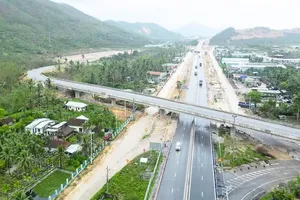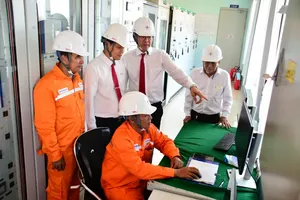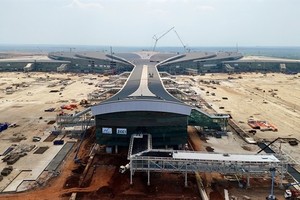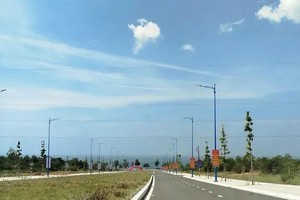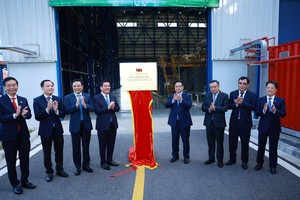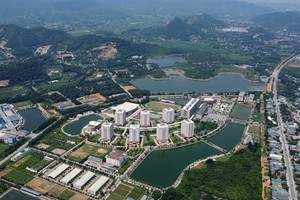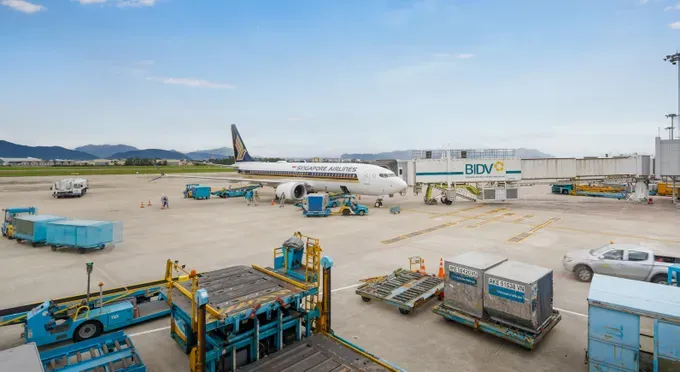
Following the restructuring of regional planning, the viability of building airports based on provincial boundaries has become a significant concern.
The perils of overly optimistic forecasts
In the Southeast region, news that Bien Hoa Airport had been approved by the Ministry of Construction to serve as a dual-use airport through 2030, with a vision toward 2050, sparked public debate. The case of Bien Hoa Airport illustrates the potential for misallocation of resources. With its close proximity - only 20 kilometers from Tan Son Nhat Airport and just over 30 kilometers from Long Thanh Airport, the economic rationale for a new airport in this location is being questioned.
According to Chairman Tran Quang Toai of the Dong Nai Historical Science Association, the Government should prioritize concentrating resources on the development of Long Thanh Airport to meet the long-term aviation needs of the region. He argues that investing in robust road, waterway, and rail connections between provinces in the Central Highlands, the South Central Coast and Long Thanh Airport would diminish the importance of geographical distance as a factor in aviation decisions. Therefore, any future proposals for new airports must be supported by comprehensive and rigorous research and assessment to avoid repeating past mistakes.
Associate Professor Nguyen Thien Tong, former Head of the Department of Aeronautical Engineering at Ho Chi Minh City University of Technology, observed that airport planning has often been shaped by administrative thinking rather than by operational networks. Some provinces, located less than 80 km from an existing airport, still looking to build their own. This fragmented mindset results in an inefficient network.
Costly lessons have already been learned from inaccurate demand forecasts, with airports such as Rach Gia, Ca Mau, Dien Bien, Na San, and Can Tho having received investments worth thousands of billions of dong, yet hosting few or no commercial flights.
Nevertheless, the Civil Aviation Authority of Vietnam's passenger demand forecasts for 2030 remain overly optimistic. For example, the projected annual passenger volumes for Sa Pa, Phan Thiet, and Ca Mau airports are 3.7 million, 2.8 million, and 2.2 million respectively—figures that are excessively high. When calculating passenger volume per 100 residents in the corresponding regions, the overestimation becomes even more evident.
Another example is Dien Bien Airport. In 2019, passenger volume per 100 residents was fewer than 10, yet the forecast for 2030 is 135, an increase of 13.5 times. Likewise, in 2019, Ca Mau Airport had fewer than three passengers per 100 residents, but by 2030 is forecasted to reach 165, a 55-fold increase. Sa Pa Airport, which had no passenger volume in 2019, is forecasted to have 455 passengers per 100 residents by 2030.
According to the State Audit Office, review reports have highlighted multiple disadvantages in the investment, upgrading, and expansion of several airport projects planned through 2020, with orientation toward 2030, under the management of the Airports Corporation of Vietnam (ACV).
Specifically, the processes of planning, evaluation, approval, adjustment, and implementation for determining airport and cargo terminal capacity were inconsistent with the calculations and forecasts provided by consulting units. Explanations were lacking regarding land-use planning, calculations of required land area corresponding to airport classifications, and capacity scales set out in the airport master plans. In some cases, detailed or adjusted airport plans were prepared before the overall adjustment of the national air transport development plan to 2020 with a 2030 orientation.
The State Audit Office also noted that assigning planning tasks for Tho Xuan Airport to the Thanh Hoa Department of Transport (at the time) and for Sa Pa Airport to the Lao Cai Department of Transport (at the time), rather than having them prepared by the Civil Aviation Authority of Vietnam (CAAV), was inconsistent with the Clause 2, Article 5 of Circular No. 17/2016/TT. This circular stipulates the regulations for airport planning and management; land-use management; and the management of construction, renovation, upgrading, maintenance, and repair of airport infrastructure.
Furthermore, although the detailed plans of Van Don Airport, Tan Son Nhat Airport, and Phan Thiet Airport were approved for adjustment, the CAAV did not issue planning tasks to guide these adjustments. Nor did it revise the affected planning content of previously approved detailed plans. In several cases, the adjustments made were inconsistent, and the required public disclosure of the plans was not carried out in accordance with the present regulations.
Restructuring airport planning
The National Assembly's Resolution 202/2025/QH15 on the reorganization of provincial-level administrative units has created larger, consolidated regions with new socio-economic dynamics. This shift requires a fundamental change in airport planning, moving away from the outdated 'one province, one airport' model toward a more efficient 'regional hub airport' strategy.
Former Head of the Prime Minister’s Economic Advisory Group Nguyen Duc Kien observes that the desire of many localities for their own airports and seaports is understood. He notes that new infrastructure projects are not inherently wasteful and, in some cases, can align with broader interests and contribute to local development. However, he cautions that proposals must be grounded in a thorough analysis of a region's unique comparative advantages and genuine potential. Projects that fail to meet these criteria are unlikely to be effective.
He further that stressed airport planning must satisfy three key criteria with the first being operational considerations, including factors such as flight conditions, airspace safety, infrastructure connectivity, and a viable financial plan. The second is integrating with the regional economy to stimulate wider development. The third criteria is economic efficiency for airlines and convenience for passengers, measured by travel time, transportation costs, and passenger behavior patterns.
At present, most airport investment reports scarcely analyze the concrete needs of airlines and their passengers. If international carriers find conditions unfavorable, they simply will not operate making forecasts of 30 or 50 million passengers meaningless.
Associate Professor Nguyen Thien Tong, who has consistently voiced strong critiques against the widespread trend of provinces vying for airports, noted that Vietnam’s number of civilian airports remains modest compared to regional and global standards. Still, the construction of new airports must be based on genuine demand, with scales aligned to the national airport system, realistic financing capacity, and balanced benefits among localities, investors, and passengers. Regulators, he added, must clarify issues related to private investment, financial projections, and post-operation efficiency.
Mr. Nguyen Van Vinh from the Development Strategy Institute under the Ministry of Finance argued that localities seeking airports must provide evidence through actual data such as population density, tourism potential, transport demand, and infrastructure connectivity rather than relying on sentiment or following trends. Regulatory agencies should also set clear criteria for small airports; for instance, a minimum capacity from 500,000 to one million passengers per year; committed airline operators; and viable investment plans under public–private partnership (PPP) arrangements.
Aviation experts concur that the province aspires for airports to boost economic, social, and tourism growth are legitimate. Nevertheless, new construction must be grounded in actual needs, appropriate to the national airport system, financially feasible, and designed to balance the interests of localities, investors, and passengers.
According to Dr. Kien, aviation infrastructure investment must not devolve into parochial competition. Building even a small-to-medium-sized airport requires approximately VND5,000 billion (US$190 million) and may take up to 50 years to recoup. For instance, Quang Tri Airport, approved under a PPP scheme with total investment of VND5,820 billion, is contracted for capital recovery through toll collection over 47 years and 4 months, based on an investor contribution of VND5,500 billion.
Likewise, Sa Pa Airport in Lao Cai Province, approved in its first phase with a designed capacity of 1.5 million passengers per year, has an investment budget of over VND4,180 billion. Of this, nearly VND3,000 billion must come from private capital and loans, with the remainder from the state. The project’s payback period is projected at 46 years and 2 months.
